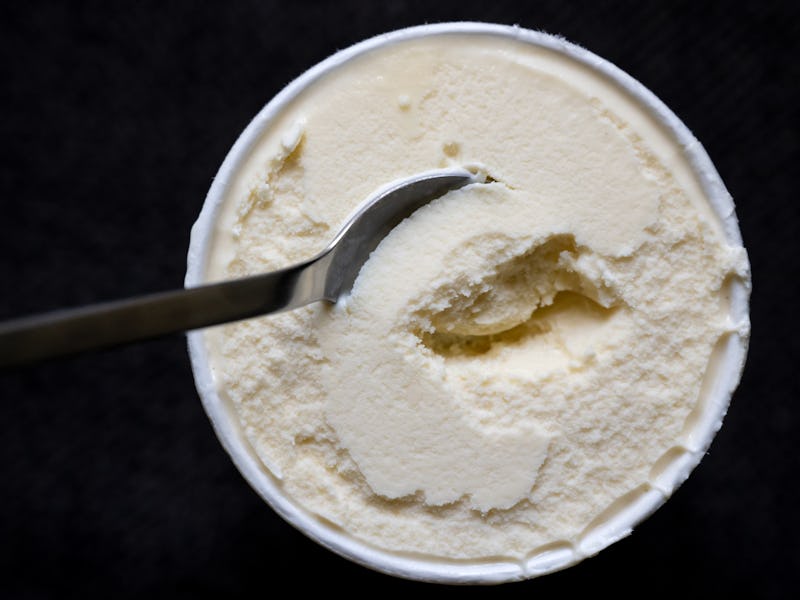Is vanilla extract fake? Here’s the secret chemistry behind the ancient flavor
Vanilla beans are “chemical factories.”

“Vanilla” as a synonym for boring or plain must be struck from the cultural lexicon. In fact, the spice — yes, it’s a spice, and the second most expensive one behind saffron — is so richly complex that its signature aroma comes from more than 200 chemical compounds.
It’s clear that vanilla isn’t really “vanilla” as in boring, but there’s also a question of whether vanilla flavors in syrups and desserts come from the real thing. For nearly three years, food scientists Paola Forero and Devin Peterson at The Ohio State University have been dissecting the chemicals that waft together into a sweet, mild scent.
Vanilla beans come from an orchid native to Central America.
Where does vanilla come from?
Vanilla comes from a bean inside a long, thin pod that grows from the orchid Vanilla plantifolia, native to Central America. Anyone who’s grown orchids knows they’re finicky, fussy plants, so growing vanilla bean takes a good deal of time and attention. This orchid, in particular, has a brief flowering period of just one day.
From harvest to export, cultivating vanilla can take up to a year. Once the beans are harvested, they need to be cured, which can last as long as nine months. As they’re curing, the beans develop and release quintessential flavor compounds, so skirting this step results in sub-par vanilla. One of the star compounds in vanilla is vanillin.
Vanilla beans are what Peterson describes as “chemical factories.”
“The bean is taking amino acids and carbohydrates and fats and rearranging them via these enzymatic pathways into vanillin,” he says. “It doesn’t just appear magically.”
What surprised Forero and Peterson is the companion compounds that enhance vanilla’s flavor profile. In a methodology termed flavoromics, the duo screened vanilla’s entire chemical composition and then used statistical tools to predict which specific compounds may be some of the key contributors to the scent. They isolated and investigated these compounds and found that some of the more unsavory ones impact vanilla’s quality more than the fragrant ones.
“It seems that the main driver of liking vanilla is not actually positively correlated compounds; it’s more about the negatively correlated aspect,” Forero says.
Positively correlated compounds are molecules that evoke a positive response from people, while negatively correlated compounds evoke a negative response. Peterson says people are more likely to give more weight to a negative reaction than to a positive one.
Better quality vanilla, the researchers found, is when the negatively perceived compounds have been removed rather than when more positively perceived compounds are added. The team will publish their findings detailing these specific compounds later this year.
Is vanilla extract real vanilla?
Vanilla is costly and difficult to produce, so manufacturers look for shortcuts by creating a simplified version of vanilla from its star molecules. Vanillin is key to the spice’s flavor, so food manufacturers may sidestep this process by adding a single compound that vanilla contains called vanillin, which creates a simpler product.
“Artificial vanilla doesn’t have the same character as natural vanilla,” Peterson says, because natural vanilla is more complex and has more factors contributing to the flavor. “Extracting them from a plant is very labor intensive and costly.” Part of the goal of this research is to help find more sustainable and economical ways for manufacturers to produce vanilla-flavored foods that still have complex flavors.
There’s one rumored vanilla synthetic that’s a little more hair-raising than isolated vanillin.
If you’ve yet to hear about castoreum as a vanilla flavor booster, prepare to be confused, disgusted, and then relieved. Castoreum comes from anal glands in beavers and may be sprayed to mark territory. It’s not like skunk spray but instead is on the musky side.
“I can have a flavor compound that is in a fruit, and yet a bigger source is in a beetle,” Peterson offers as an example. The biosynthetic roots he was explaining come from surprising places and can sometimes create similar products. It happens that molecules in castoreum create a scent that resembles that of other compounds.
The good news: If anything, castoreum is used more in perfumes than food.
Sometimes vanilla bolsters other flavors rather than taking center stage, which is why it’s sometimes added to chocolate products.
Is vanilla “vanilla?”
Vanilla is many things, but it isn’t boring. Vanilla is so complex that it’s used to bring out other flavors, like chocolate.
“Often vanillin is added to it to enhance the chocolate experience,” Peterson says. As an additive, vanillin brings out chocolate-y goodness. Of course, on its own, good vanilla is rich, fragrant, and replete with flavor.
CHECK, PLEASE is an Inverse series that uses biology, chemistry, and physics to debunk the biggest food myths and assumptions.
Now read this: Are babies “super tasters?” A food scientist indulges in the secret